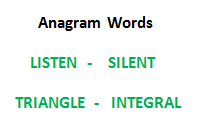List can be sorted using Java 8 Lambda Expressions, moving right past syntactic sugar and into real and powerful functional semantics. The implementation of all of these examples and code snippets can be found over on gitHub: https://github.com/ramanujadasu/tutorials/tree/master/core-java-modules/core-java-lambdas
List<Human> humans = Lists.newArrayList( new Human("Sarah", 10), new Human("Jack", 12) ); Basic Sort Without Lambdas: Collections.sort(humans, new Comparator<Human>() { @Override public int compare(Human h1, Human h2) { return h1.getName().compareTo(h2.getName()); } }); Basic Sort With Lambda Support: humans.sort( (Human h1, Human h2) -> h1.getName().compareTo(h2.getName())); Basic Sorting With No Type Definitions: humans.sort((h1, h2) -> h1.getName().compareTo(h2.getName())); Sort Using Reference to Static Method: public static int compareByNameThenAge(Human lhs, Human rhs) { if (lhs.name.equals(rhs.name)) { return Integer.compare(lhs.age, rhs.age); } else { return lhs.name.compareTo(rhs.name); } } humans.sort(Human::compareByNameThenAge); Sort Extracted Comparators: Collections.sort( humans, Comparator.comparing(Human::getName)); Reverse Sort: Comparator<Human> comparator = (h1, h2) -> h1.getName().compareTo(h2.getName()); humans.sort(comparator.reversed()); Sort With Multiple Conditions: List<Human> humans = Lists.newArrayList( new Human("Sarah", 12), new Human("Sarah", 10), new Human("Zack", 12) ); humans.sort((lhs, rhs) -> { if (lhs.getName().equals(rhs.getName())) { return Integer.compare(lhs.getAge(), rhs.getAge()); } else { return lhs.getName().compareTo(rhs.getName()); } }); Sort With Multiple Conditions -Composition: humans.sort( Comparator.comparing(Human::getName).thenComparing(Human::getAge) ); Sorting a List With Stream.sorted(): List<String> letters = Lists.newArrayList("B", "A", "C"); List<String> sortedLetters = letters.stream().sorted().collect(Collectors.toList()); == List<Human> humans = Lists.newArrayList(new Human("Sarah", 10), new Human("Jack", 12)); Comparator<Human> nameComparator = (h1, h2) -> h1.getName().compareTo(h2.getName()); List<Human> sortedHumans = humans.stream().sorted(nameComparator).collect(Collectors.toList()); Or List<Human> sortedHumans = humans.stream() .sorted(Comparator.comparing(Human::getName)) .collect(Collectors.toList()); Sorting a List in Reverse With Stream.sorted(): List<String> letters = Lists.newArrayList("B", "A", "C"); List<String> reverseSortedLetters = letters.stream() .sorted(Comparator.reverseOrder()) .collect(Collectors.toList()); == List<Human> humans = Lists.newArrayList(new Human("Sarah", 10), new Human("Jack", 12)); Comparator<Human> reverseNameComparator = (h1, h2) -> h2.getName().compareTo(h1.getName()); List<Human> reverseSortedHumans = humans.stream().sorted(reverseNameComparator) .collect(Collectors.toList()); Or List<Human> reverseSortedHumans = humans.stream() .sorted(Comparator.comparing(Human::getName, Comparator.reverseOrder())) .collect(Collectors.toList()); Null Values: List<Human> humans = Lists.newArrayList(null, new Human("Jack", 12)); humans.sort((h1, h2) -> h1.getName().compareTo(h2.getName())); == List<Human> humans = Lists.newArrayList(null, new Human("Jack", 12), null); humans.sort((h1, h2) -> { if (h1 == null) { return h2 == null ? 0 : 1; } else if (h2 == null) { return -1; } return h1.getName().compareTo(h2.getName()); }); Or humans.sort(Comparator.nullsLast(Comparator.comparing(Human::getName))); Or humans.sort(Comparator.nullsFirst(Comparator.comparing(Human::getName)));
https://www.baeldung.com/java-8-sort-lambda







